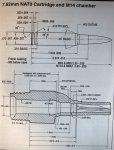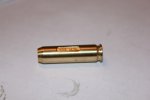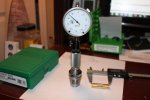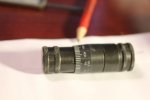Context:
-handloading noob
-just loading for two AR10 platforms for now (bolt guns down the road)
-not BR/comp. just field prone, 350-500m paper
-Goals: 1)not blowing up self or rifle 2)getting 1/2 to 3/4 MOA 3)learning the finer points of handloading
The whole 308/762 headspace thing makes my brain hurt. I get the pressure units (CUP vs PSI) etc. POF says the P308 is chambered in both, GAP says the GAP-10 is .308. From what I've found SAAMI says 1.6300-1.6400 and NATO says 1.628-1.634...
Question 1:
If a cartridge headspace is .006 shorter than SAAMI .308 spec, is it dangerous for either rifle?
Question 2:
If a cartridge headspace measures .004 under 7.62 NATO spec, is it dangerous for either rifle?
Question 3:
If a cartridge headspace measures .002 over NATO spec, is it dangerous for either rifle?
Details:
Using a rcbs precision mic I get the following headspace values:
M80 knockoffs from Ventura...1.624-1.628
Federal GMM175...1.6252-1.6274
Fired cases from the GAP-10...1.6316-1.6353 AVG 1.6330
Cases after full-length sizing with shellholder contact on die...1.6262-1.6297 AVG 1.6279
New Lapua brass...1.6262-1.6299 AVG 1.6281
I suppose the gauge could be off but if my numbers are right that would mean:
-Neck sizing spent brass without resizing could yield a round that was .0013 longer than NATO spec (but within SAAMI 308)
-Some of these rounds/cases could be .004 under NATO and .006 under SAAMI spec
I know, I know...some of you are saying "it's not that serious" but I just want to make sure I don't blow myself up, hurt my gun, overwork brass etc so I want to try to understand this. Thanks for any help or advice you can share.
-handloading noob
-just loading for two AR10 platforms for now (bolt guns down the road)
-not BR/comp. just field prone, 350-500m paper
-Goals: 1)not blowing up self or rifle 2)getting 1/2 to 3/4 MOA 3)learning the finer points of handloading
The whole 308/762 headspace thing makes my brain hurt. I get the pressure units (CUP vs PSI) etc. POF says the P308 is chambered in both, GAP says the GAP-10 is .308. From what I've found SAAMI says 1.6300-1.6400 and NATO says 1.628-1.634...
Question 1:
If a cartridge headspace is .006 shorter than SAAMI .308 spec, is it dangerous for either rifle?
Question 2:
If a cartridge headspace measures .004 under 7.62 NATO spec, is it dangerous for either rifle?
Question 3:
If a cartridge headspace measures .002 over NATO spec, is it dangerous for either rifle?
Details:
Using a rcbs precision mic I get the following headspace values:
M80 knockoffs from Ventura...1.624-1.628
Federal GMM175...1.6252-1.6274
Fired cases from the GAP-10...1.6316-1.6353 AVG 1.6330
Cases after full-length sizing with shellholder contact on die...1.6262-1.6297 AVG 1.6279
New Lapua brass...1.6262-1.6299 AVG 1.6281
I suppose the gauge could be off but if my numbers are right that would mean:
-Neck sizing spent brass without resizing could yield a round that was .0013 longer than NATO spec (but within SAAMI 308)
-Some of these rounds/cases could be .004 under NATO and .006 under SAAMI spec
I know, I know...some of you are saying "it's not that serious" but I just want to make sure I don't blow myself up, hurt my gun, overwork brass etc so I want to try to understand this. Thanks for any help or advice you can share.












